Introduction
Fermentable Oligosaccharides, Disaccharides, Monosaccharides, and Polyols, or FODMAPs, are a class of fermentable carbohydrates that have been shown to cause gastrointestinal distress in sensitive people. For individuals managing dietary sensitivities, it is essential to comprehend their influence on digestive health. This investigation explores the relationship between FODMAPs and ginger ale, concentrating on the crucial query, “Is ginger ale low FODMAP?”
The importance of this investigation stems from the increasing recognition of gastrointestinal sensitivity and the requirement for appropriate beverage selections. People on a low-FODMAPS diet have been interested in ginger ale, a popular bubbly beverage. As we set out on this adventure, we want to clarify whether ginger ale can benefit digestive health and if it conforms to the low-FODMAPS diet guidelines.
In addition to answering the main query of our conversation, this research provides a detailed analysis of the benefits, things to think about, and substitutes associated with ginger ale. As we go through the complex world of FODMAPs, we aim to arm readers with the information they need to make wise choices regarding including ginger ale in a low FODMAP diet. Let’s explore the subtleties and complexities of ginger ale’s relationship to digestive health.
Comprehending FODMAPs
It becomes crucial to understand FODMAPs as we investigate if ginger ale has low FODMAP. The health of the digestive system is greatly influenced by these fermentable carbohydrates, which are classified as fermentable oligosaccharides, disaccharides, monosaccharides, and polyols. This section thoroughly analyzes these elements, shedding light on how they affect the complex digestive system.
FODMAPs cause digestive problems when fermenting in the colon after being improperly absorbed in the small intestine. This fermentation process can lead to bloating, discomfort, and other related issues, especially in those with more sensitive digestive systems. Understanding how FODMAPs function in the digestive process is critical for individuals navigating dietary choices, as is being aware of potential triggers.
A low FODMAP diet becomes an important tactic for those with digestive sensitivity. Reduced use of foods and drinks high in fructooligosaccharides (FODMAPS) may help people feel better overall and reduce symptoms. This section delves into the specifics of FODMAPs to arm readers with the knowledge they need to make educated decisions about what they eat and how ginger ale might fit into a low-FODMAPS lifestyle.
The Role of Low FODMAP Diets

As we go deeper into the study of FODMAPs and their complex relationship to gut health, it becomes critical to comprehend the significant effects of foods high in FODMAPs. These fermentable carbohydrates, also known as FODMAPs (fermentable oligosaccharides, disaccharides, monosaccharides, and polyols), can cause symptoms in sensitive people ranging from bloating to abdomen pain. The more we learn about the causes of digestive distress, the more obvious it is that making educated food decisions is crucial.
Now for the low-FODMAPS diet, the protagonist of our story. When it comes to treating gastrointestinal distress, especially in cases like Irritable Bowel Syndrome (IBS), this nutritional approach shines as a ray of light. People can significantly alleviate symptoms and promote gut health by selecting foods low in elevated fructooligosaccharides (FODMAPS). The ability of a low-FODMAPS diet to lessen the effects of these fermentable substances is evidence of the value of customized nutrition.
This section explores the complex relationship between fermentable carbohydrate polymers (FODMAPS) and gut health, highlighting the necessity of a deliberate move toward low-FODMAPS diets. We shed light on the potentially disruptive effects of foods high in dietary fiber and the life-changing advantages of a carefully planned low-FODMAPS diet, especially for individuals battling the intricacies of IBS. It’s a path to digestive harmony where food decisions are major in coordinating relief and taking back a life free from digestive problems.
Examining the Ingredients of Ginger Ale
Before we go into the complex world of ginger ale, let’s break down its main ingredients: carbonated water, ginger flavoring, and sugars. Every component is essential to creating the character of this popular drink. We start our investigation by thoroughly examining these fundamental components, illuminating the process that turns basic materials into the fizzy delight known as ginger ale.
One of the main ingredients of ginger ale is carbonated water, which gives it its characteristic fizz. Uncovering the sensory experience that carbonation offers requires an understanding of its dynamics. This section explores the carbonation process, elucidating the formation of bubbles and hinting at the effects on the beverage as a whole. We discover the delicate undertones that carbonation adds to ginger ale, taking it from a bland mixture to a sparkling beverage.
The main ingredient in ginger ale adds flavor and a unique character that makes it stand out. Ginger, which comes from the rhizome of the Zingiber officinale plant, gives the drink a comforting, mildly spicy, and aromatic flavor. Here, we delve into the qualities that have made ginger a highly sought-after flavoring agent, its historical significance, and its ability to elevate a straightforward beverage to a complex and savory experience.
Ginger ale is a dilemma in the world of sweeteners, particularly for those who are concerned about FODMAP content. This section assesses sweeteners and highlights the value of low-FODMAPS substitutes. We recommend avoiding high FODMAP additions and highlighting alternatives like glucose syrup and cane sugar for people looking for an easy treat on the digestive system. Ginger ale can be enjoyed for its flavor and compatibility with low FODMAP preferences by navigating the sweetener environment.
As we approach the end of our investigation of the components of ginger ale, it is clear that the ideal combination is more than just tasty. It requires careful balancing of low-FODMAPS sweeteners, ginger essence, and carbonation. To make sure that your next sip of ginger ale is a carefully created symphony of flavors that fit with low FODMAP considerations, this section acts as a guide for enthusiasts.
Is Ginger Ale Low FODMAP?
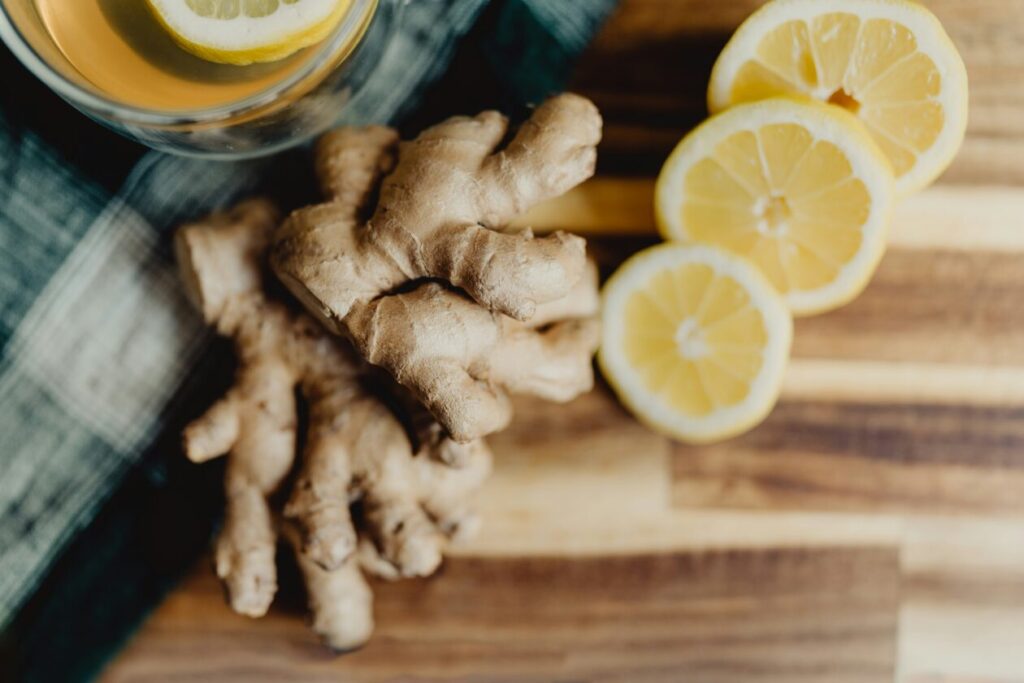
Because ginger ale is made with components intentionally chosen to minimize fermentable carbs, it is designated as a low-FODMAP beverage. This difference contributes significantly to its easily digested profile, which makes it a good option for people following a low-FODMAPS diet. The following justifies ginger ale’s inclusion in the low FODMAP category:
Mindful Sweeteners
Steer clear of High FODMAP Sweeteners: When creating recipes for ginger ale, sweeteners are carefully considered. Ginger ale reduces the number of sugars that may ferment in the digestive tract by excluding high fructose corn syrup (HFCS) and other high fructose sweeteners. Its low FODMAP rating is partly attributed to this careful sweetener selection.
Balanced Carbonation
Carbonated Water Dynamics: Ginger ale’s carbonation is a carefully managed procedure. The main ingredient is carbonated water, whose dynamics are controlled to avoid producing too much gas while being consumed. This emphasis on balanced carbonation aligns with the low-FODMAPS diet, which lessens the chance of discomfort from too much gas.
Ginger’s Digestive-Friendly Nature
Mild Effect of Ginger Flavoring: Ginger flavoring, a major ingredient in ginger ale, has digestive advantages in addition to taste. Ginger is well known for its calming effects on the stomach. With a low-FODMAPS diet, ginger flavoring makes the drink more palatable for the digestive system.
Simply put, the careful preparation of ginger ale—which considers the dynamics of carbonation, sweeteners, and ginger flavoring—makes for a drink that is more than just refreshing. For individuals watching their consumption of FODMAPs, it becomes a digestive-aware option that provides a tasty and bubbly experience without jeopardizing digestive health.
Popular Ginger Ale Brands Assessment
Examining Canada Dry Ginger Ale’s FODMAP Status
We dive into the FODMAP details of Canada Dry Ginger Ale, starting with a thorough analysis so that readers can decide whether it fits into a low-FODMAPS diet.
Important Elements Beneath the Microscope:
- Carbonated Water: The base of the beverage, carbonated water usually has no FODMAPs, which adds to its fizzy quality.
- High Fructose Corn Syrup (HFCS): Although HFCS is a common ingredient, it presents questions about FODMAPs, possibly making Canada Dry Ginger Ale a tall FODMAP beverage. Understanding the subtleties of HFCS is essential for individuals watching their intake of FODMAPs.
- Citric Acid: Usually low in FODMAPs, citric acid is in modest concentrations. On the other hand, sensitive people may have symptoms if they consume too much.
- Natural Flavors: “Natural flavors” refers to a variety of ingredients. Some might add complexity, while others might be FODMAP-friendly. For a correct FODMAP assessment, comprehensive ingredient information is necessary.
- Sodium Benzoate: Sodium Benzoate is considered a safe preservative with no discernible effect on FODMAP levels.
After careful analysis, Canada Dry Ginger Ale exhibits a complex FODMAP profile. Although some ingredients and carbonated water are safe, the noticeable amount of high fructose corn syrup (HFCS) causes some worry; for those who rigorously follow a low-FODMAPS diet, consuming ginger ale cautiously or looking into other possibilities could be best. Always seek the advice of a healthcare provider for individualized dietary recommendations based on specific preferences and sensitivities.
Examining Canada Dry Zero Sugar Ginger Ale:
We carefully evaluate the FODMAP content of Canada Dry Zero Sugar Ginger Ale in our in-depth analysis, offering a comprehensive comparison with the standard version. In this analysis, the important elements—carbonation, ginger flavoring, and sweeteners—take center stage.
- Carbonated Water: As a main ingredient, carbonated water usually doesn’t raise any FODMAP red flags and adds fizz to the drink without making anyone sick.
- Sweeteners: Canada Dry Zero Sugar Ginger Ale most likely utilizes artificial sweeteners instead of sugar. In moderation, common sugar replacements like aspartame, sucralose, or acesulfame potassium are typically regarded as low FODMAP and shouldn’t aggravate stomach discomfort.
- Ginger Flavoring: A crucial component might be either artificial or natural. Since ginger has a low FODMAPS content, this feature should be well-tolerated as long as the flavoring doesn’t include any high FODMAP ingredients.
Based on the investigation, it can be concluded that Canada Dry Zero Sugar Ginger Ale is a good choice for people on a low FODMAP diet. Insights from the comparison evaluation with its standard equivalent are intended to help readers make decisions that align with their dietary requirements and digestion preferences.
Drinks to Avoid on a FODMAP Diet
Comprehending the nuances of a FODMAP diet entails avoiding some beverages that can include components harmful to individuals with sensitive digestive systems. Sugars can have several names, which makes it more difficult for people who need to become more familiar with FODMAP categories to navigate through deceptive labeling.
1-Fructose’s Deceptive Presence
Fruit-based teas and juices are among the many beverages that contain fructose, a monosaccharide that belongs to the “M” category in the FODMAP database. Popular options such as orange, grape, and apple juice have high fructose content and are inappropriate for a low-FODMAPS diet. In addition, steer clear of sodas, alcoholic beverages like rum and sparkling wine, and energy drinks like cola, Sprite, and ginger ale. Because they both contain fructose, even seemingly harmless sweeteners like honey and agave may cause symptoms of IBS, making them potentially dangerous.
2-The Oligosaccharide Chains, or Fructans
The complex carbohydrates known as fructans are made up of chains of fructose and are found in the “O” category (oligosaccharides) of the FODMAP. Drinks high in fructans, such as coconut water and kombucha, a fermented tea, contribute to their high FODMAP content. People who try to avoid foods or drinks that include chicory root, such as tea and coffee alternatives, should use caution when consuming them. Rich in fructans, chicory root may make digestive pain worse.
3-Lactose-Intolerant Options
Lactose disaccharide, or “D” in FODMAP, is a common component of dairy products, especially milk. Banana, strawberry, and melon-flavored milk substitutes are particularly potent because they contain lactose and fructose. It is important to avoid these dual offenders, highlighting the significance of closely examining labels. Because regular milk contains lactose, which can aggravate symptoms of IBS, it should be avoided even though it is a staple in many diets.
4-Perils of Polyols: Xylitol and Sorbitol
The “P” group in FODMAP refers to polyols, which include sugar alcohols such as sorbitol and xylitol. Those following a FODMAP diet may be endangered by these compounds, frequently falsely classified as food additives. Beer, wine, energy drinks, and sugar-free beverages can all contain sorbitol, so it’s important to check the contents carefully. Awareness of these high FODMAP ingredients in seemingly innocuous beverages is essential to preserve digestive comfort.
Schweppes Dry Ginger Ale
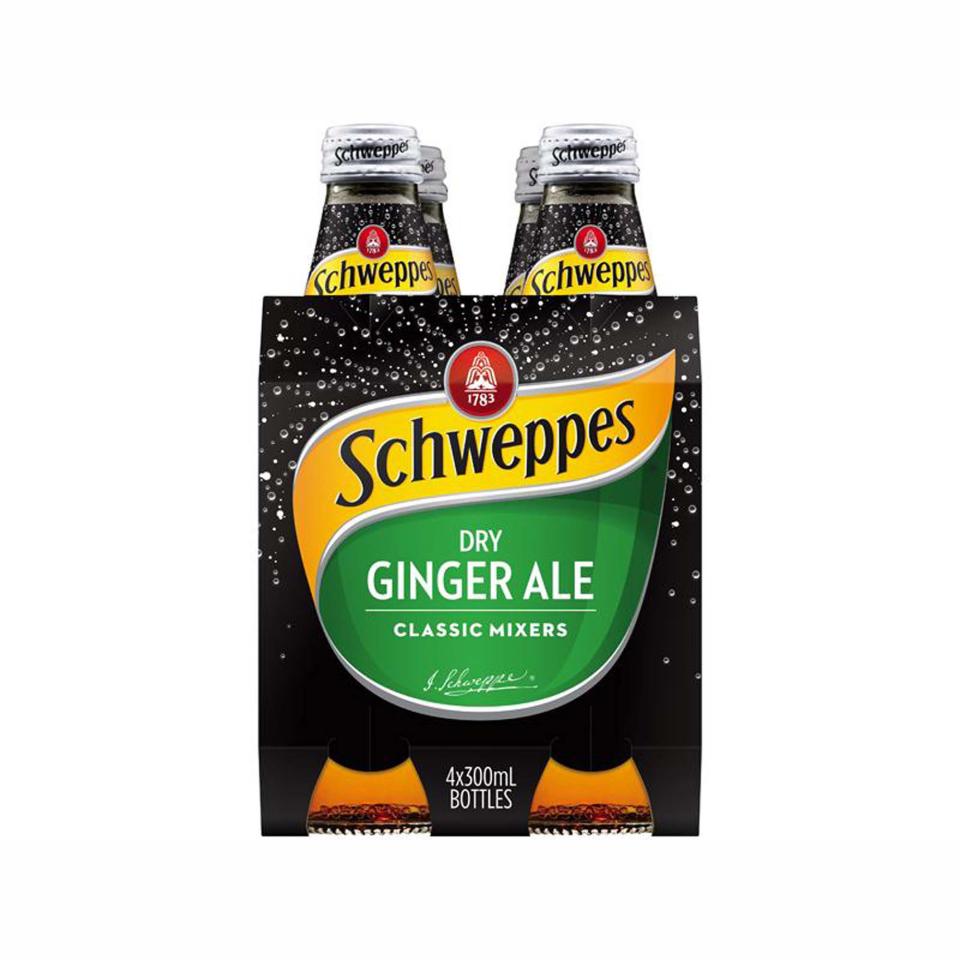
When exploring the world of ginger ale, it’s important to find out how much fructooligosaccharides (FODMAPS) are in different types and whether they suit people following a low-FODMAPS diet. For example, let’s analyze the Schweppes Dry Ginger Ale Drink (330ML) components and show how they could not be FODMAP-friendly options.
Ingredient Analysis for Schweppes Dry Ginger Ale Drink:
- Carbonated water: This main ingredient gives the drink its fizz and usually doesn’t cause any FODMAP issues.
- Sucrose (Sugar): Even though sucrose is a disaccharide in moderation, it’s considered a low FODMAP sweetener. However, sensitive people may get symptoms if they consume excessive amounts.
- High-Fructose Corn Syrup (HFCS): In FODMAPs, high fructose corn syrup (HFCS) is a notorious substance that should be avoided. Given that HFCS probably has a high FODMAP, people traveling with sensitivity to FODMAPs should be cautious.
- Citric Acid: Citric acid typically has a low FODMAP when consumed in moderation. However, for some people, overindulging may exacerbate symptoms.
- Flavoring: “Flavouring” is a general phrase that includes various elements. Certain flavorings might not cause issues, but others might be FODMAP-friendly. Precise information is essential for reliable evaluation.
- Sodium Citrate: This component is generally regarded as low FODMAP in regular serving amounts.
- Sodium Benzoate: Sodium Benzoate is a safe preservative that doesn’t raise FODMAP levels.
- Caramel Color: Caramel coloring is a widely used, harmless additive that does not affect FODMAP levels.
Upon closer inspection, high fructose corn syrup—a component that may have a high fructose metabolism—is found in Schweppes Dry Ginger Ale Drink. Additionally, the general term “flavoring” must be more precisely defined for a thorough FODMAP assessment. Depending on the source or serving size, these components may increase the beverage’s FODMAP content, making it inappropriate for people looking for low-FODMAPS choices.
In conclusion, while ginger ale brands such as Schweppes may taste great, people concerned about their fructose malabsorption should carefully read ingredient lists. In the context of the FODMAP landscape, it is important to remember that not all ginger ale variations are made equal. Be cautious, read labels, and choose drinks compatible with your FODMAP tolerance. Cheers to choosing wisely and keeping your digestive system in mind when following the FODMAP diet!
Homemade Ginger Ale
A lighthouse for people suspicious of commercial brands in a society where dietary concerns are paramount is homemade ginger ale. Customizing ginger ale to meet nutritional requirements and personal tastes is a tempting alternative. This section offers a well-considered suggestion for those who value transparency while selecting beverages. Exploring the world of homemade ginger ale provides two benefits: first, you get a cool beverage, but second, you get to know every component that goes into making it.
People have exact control over the components when making ginger ale at home. Thus, the final product is customized to fit low FODMAP diet requirements. This customization creates a delicious and personalized ginger ale experience and a sense of empowerment over one’s food choices.
Let’s explore a simple recipe that promises the ideal balance of flavors without sacrificing the effects of FODMAPs.
Components:
- One cup of fresh ginger peeled and sliced
- Four cups of water
- 1/2 cup cane sugar, which is regarded as a low-FODMAPS sweetener
- Two cups of club soda
- Cubes of ice—for serving
- Not required: Slices of lemon or lime as garnish
Guidelines:
Get the Ginger Infusion Ready:
- In a saucepan, mix water and fresh ginger slices.
- After bringing the mixture to a mild boil, lower the heat and simmer it for ten to fifteen minutes.
- After straining the water into a basin with a ginger infusion, dispose of the ginger slices.
Sweeten to Taste:
- Add the cane sugar to the warm, ginger-infused water and whisk until it dissolves completely.
- To suit your taste, adjust the sweetness, taking into account FODMAPs.
Chill and Mix:
- Let the infusion of sweetened ginger cool to room temperature, then chill until chilled.
- Combine the chilled ginger infusion with club soda before serving to add fizz.
Serve and Enjoy:
- Fill your favorite glass with ice cubes and pour the homemade ginger ale over them.
- If preferred, garnish with slices of lime or lemon.
Digestive-Friendly Refreshment:
This recipe for homemade ginger ale follows low FODMAP guidelines while satisfying your palate. You’ve made a tasty drink that supports healthy digestion with your thoughtful selection of low-FODMAPS sweeteners and infusion preparation. Play around with the recipe, changing the flavors and sweetness to suit your tastes. Savor the delight of drinking a handmade ginger ale suited to your digestive needs!
Navigating Low FODMAP Choices
- Which soft drinks are low FODMAP?
Opt for club soda, lemon-lime sodas, or those sweetened with glucose syrup to keep FODMAPs in check.
- Is ginger OK on FODMAP?
Ginger is a low FODMAP ingredient, making it a versatile and stomach-friendly addition to various dishes and beverages.
- Is ginger beer OK for IBS?
Ginger beer, crafted with real ginger, is often considered suitable for IBS sufferers due to ginger’s potential digestive benefits.
- What soda is OK for IBS?
Cola alternatives sweetened with aspartame or sucralose can offer a bubbly fix without causing significant FODMAP concerns.
- Is Coke Zero OK for IBS?
Yes, Coke Zero, which is low in fermentable sugars, is generally well-tolerated by individuals with IBS.
- Why is ginger ale good for IBS?
The ginger in ginger ale is renowned for its calming effect on the digestive system, making it a preferred choice for those managing IBS.
- Is ginger ale good for the intestines?
With its soothing properties, ginger ale can provide a comfortable digestive experience, particularly for individuals with sensitive intestines.
- Is coffee OK with IBS?
Coffee’s FODMAP content varies; choose low FODMAP options and consider factors like brewing time and bean type to minimize potential triggers.
- Is ginger low in FODMAP?
Yes, ginger is considered low FODMAP, allowing for its inclusion in various dishes and beverages.
- Is Diet Coke low in FODMAP?
Diet Coke generally has a low FODMAP, offering a satisfying beverage choice for those following this dietary approach.
- Is high fructose corn syrup low in FODMAP?
High fructose corn syrup tends to be high in FODMAPs, warranting caution for individuals on a low FODMAP diet. Always scrutinize labels for potential triggers.
Conclusion
In conclusion, a ginger ale made with carefully chosen ingredients can be a refreshing and good option for people on a low FODMAP diet. Important lessons learned include:
- Positive Aspects: For people who have sensitive stomachs, ginger ale becomes a delightful and feasible solution when it follows low FODMAP guidelines.
- Choosing Wisely: Carefully reading labels and identifying reliable brands are essential for making well-informed decisions about the intake of ginger ale.
- Seeking Professional Advice: Speaking with a nutritionist or healthcare provider can offer individualized advice and guarantee a digestive-friendly experience for people with particular dietary difficulties.
Conscious decision-making and knowledge of the effects of FODMAPs are important for digestive health in general. Enabling people to make sense of the wide array of low-FODMAPS alternatives is essential to provide a customized and pleasurable eating experience. To a colorful and tasty journey ahead!
Reference
The Low-FODMAP Diet, Explained. (2024). The New York Times. https://www.nytimes.com/2023/06/29/well/eat/low-fodmap-diet-ibs.html
NHS Choices. (2024). What is IBS? – Irritable bowel syndrome (IBS). https://www.nhs.uk/conditions/irritable-bowel-syndrome-ibs/
0. (2019, May 29). What foods contain high fructose corn syrup? Medicalnewstoday.com; Medical News Today. https://www.medicalnewstoday.com/articles/325315
Was this helpful?

Joseph Emb, RDN
Founder of StyleVitally.com | Registered Dietitian & Wellness Advocate
What I Cover:
I’m passionate about connecting nutrition science and everyday wellness to help people live healthier, more vibrant lives. I write about evidence-based nutrition, mindful eating, sustainable lifestyles, and holistic well-being at StyleVitally.com.
My Background:
The University of Texas in Austin, where I earned my Dietetics diploma, laid the groundwork for my nutrition and health career. My training and hands-on experience taught me the science and art of using nutrition to enhance health and well-being.
Professional Journey:
I’m an RDN with lots of experience. I’ve helped people seeking tailored nutritional recommendations in clinical settings and community outreach programs. My constant learning and professional development ensure that my recommendations are always based on the latest evidence.
Ethical Commitment:
My practice prioritizes integrity. My content is transparent and objective, following the most significant ethical standards. I can give my audience unbiased advice because I’m not affiliated with food businesses or industry associations. I want to help people make informed health decisions that match their values and ambitions.
Join Me on the Wellness Journey:
Join me on the path to vitality and well-being, whether facing nutritional issues, seeking sustainable lifestyle changes, or simply wanting a better, happier you. We’ll discover how diet, mindfulness, and holistic well-being can maximize your potential.




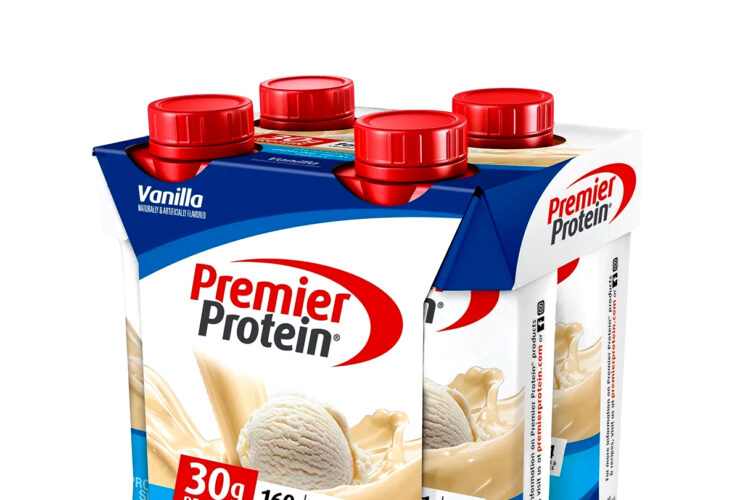


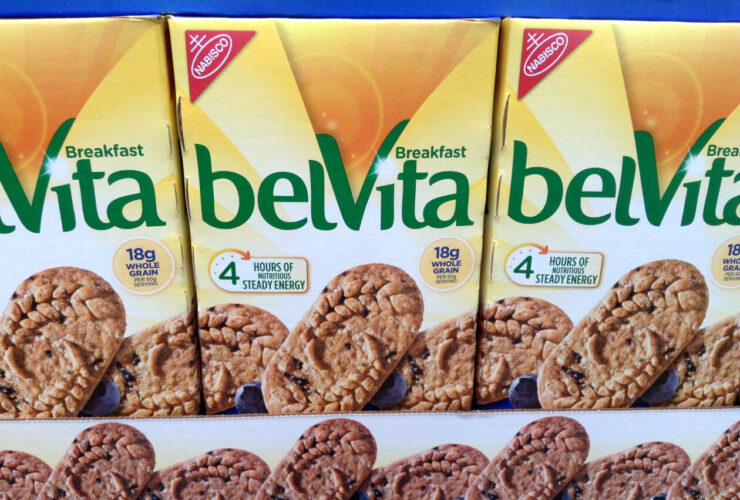
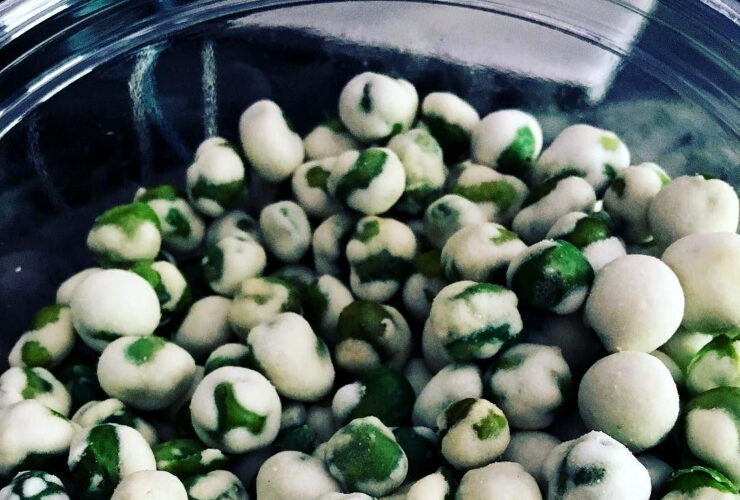
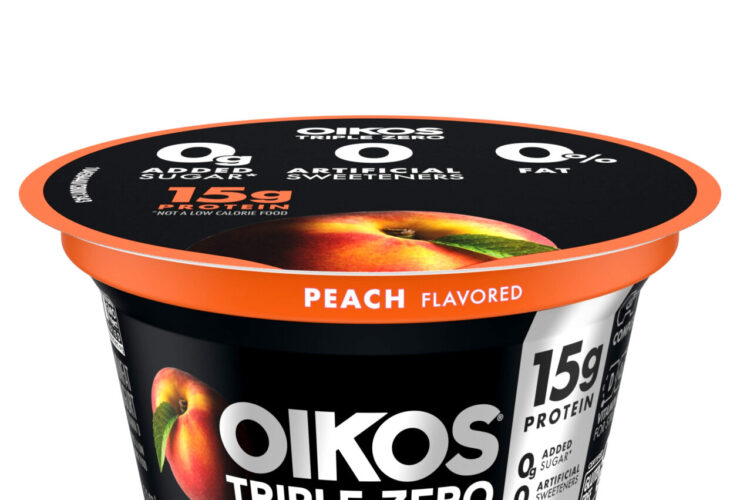
Leave a Reply
View Comments